Getting spark plugs stuck in the aluminum head of the vehicle is a notorious problem that is seen very often. The probability of being able to remove the spark plug from the head depends on a lot of factors like where the head is located; if it is lying somewhere or still attached to the engine, can you access the spark plug, your car model, etc.
Removing the spark plug from an aluminum head can be time-consuming and require you to spend some elbow grease.
You can remove the stuck spark plug by attempting to loosen it with penetrating oil, tightening and loosening it with a wrench, heating it, etc.
Table of Contents
How to Remove Stuck Spark Plug from Aluminum Head?
To remove a stuck spark plug from an aluminum head, you can try using penetrating oil to loosen the plug, tapping it gently with a hammer to break it free, or using a spark plug socket with a rubber insert to get a better grip on the plug.
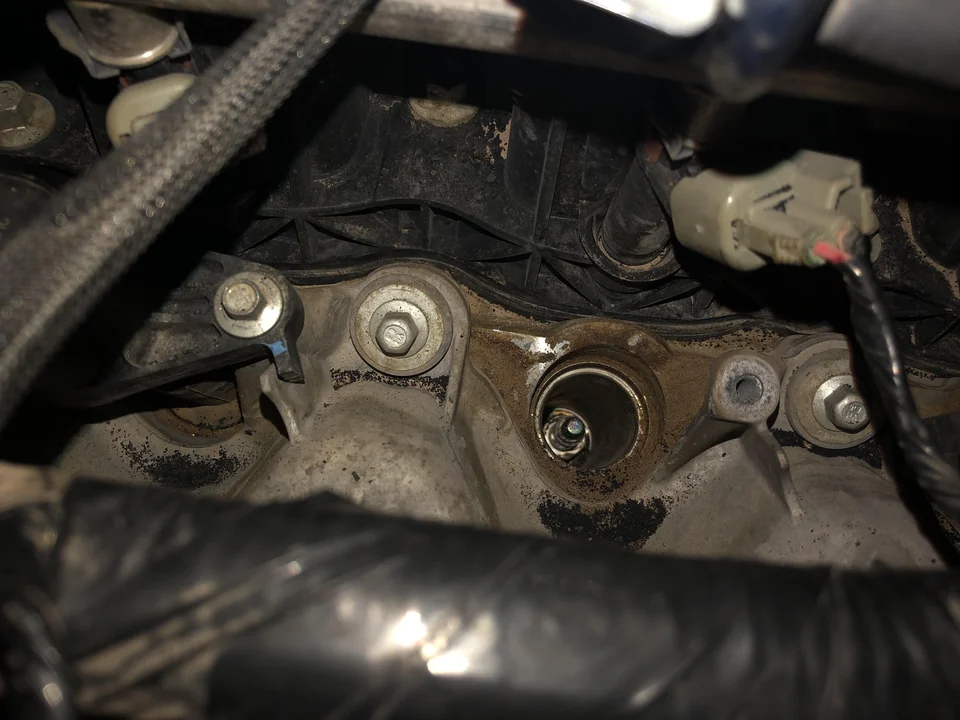
What is a Spark Plug and What Does it Do
Spark plugs are a part of vehicles designed to ignite air/fuel mixture to the engine’s cylinder. Their only work is to create explosions, which helps the engine produce more power. That’s why it is important to check spark plugs regularly.
Vehicles that have internal combustion engines have spark plugs. More specifically, it’s the gasoline engines with 4, 6, or 8 cylinders.
What happens is that when gasoline is put in the gas tank, it is sent to the engine through a fuel pump that is operated by vacuum. Once it gets inside the cylinder, the spark plug comes into action. It ignites the mixture, which helps in power moving.
When the process works efficiently, your vehicle works better, using less gas. But certain times, the spark plug gets stuck in the aluminum head. Due to debris stuck in the cylinder or oil and dirt buildup in the spark plug.
What Happens When Spark Plugs Go Bad?
You will notice problems around the engine area when the spark plug starts breaking down or is failing. You might also notice misfires in vehicles, which causes difficulty to start up.
If you are a responsible car driver, it’s your job to ensure that your vehicle’s spark plug is in the right condition.
A Step By Step Guide For How To Remove Stuck Spark Plug From Aluminum Head
You need to be very patient while removing the stuck spark plug from the aluminum head. Moreover, you need to make sure that you don’t damage the aluminum head while doing so. Messing this up can land you a repair bill exceeding $500. So, be steady and follow the given steps to properly remove the stuck spark plug from the aluminum head:
Tools Required:
- Penetrating Oil
- Brake Fluid
- Wrench
- Protective Gear
Step 1. Blow Off Dust And Dirt
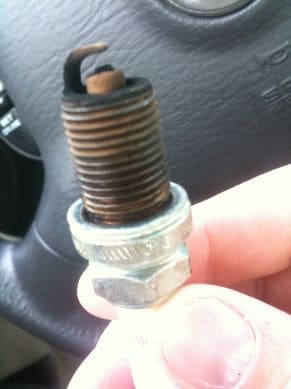
You need to start by blowing off the dust and dirt around the spark plug. Otherwise, there can be a risk of binding the spark plug threads. Also, make sure that the car engine is as cold as possible. The reason being that aluminum expands as the temperature rises. And trying to remove the stuck spark plug from the hot aluminum head can encourage it to take more threads in.
Step 2. Use A Rust Penetrating Oil
If you really want to remove the stuck spark plug from your aluminum head, get high-quality rust penetrating oil like PB Blaster, Knock’er loose, Liquid Wrench, etc. Penetrating oil is good at loosening the buildup, grime, or rust that might be the reason behind the spark plug getting stuck.
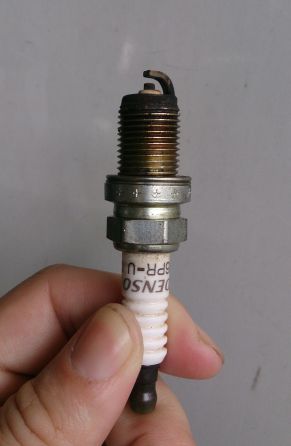
Then, spray a liberal amount of the spray in the base of the spark plug. Let it sit and soak up the penetrating fluid for at least 30 minutes before attempting to pull out the spark plug. The oil needs time to penetrate the rust that surrounds the spark plug. It is recommended that you leave the penetrating oil overnight to soak the spark plug.
Drivers have reported that PB Blaster is not much help in this case. It won’t get the spark plug loose even after soaking for an entire day. Instead, you could try CRC Freeze Off which can break the spark plug loose just after soaking it for a couple of minutes. Other than that, Knock-er Loose, Acetone, and ATF also work well.
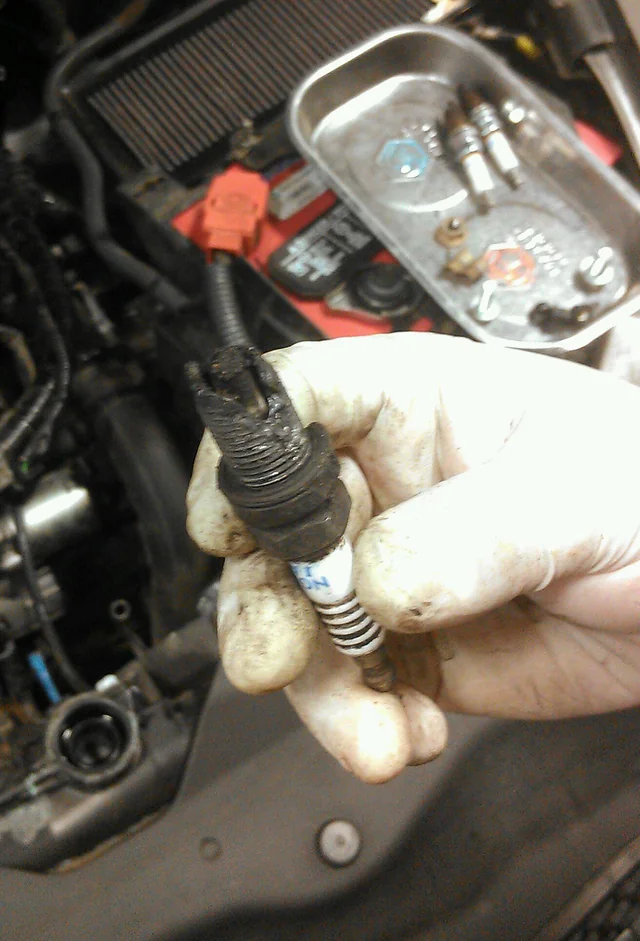
Step 3. Tap, Loosen And Tighten The Spark Plug
Gently tap the outward end of the stuck spark plug. Keep in mind that you won’t be able to pull the spark plug right out of the aluminum head just yet. However, you can get a little bit of it out. Attach the plug socket on the spark plug and give it a ¼ turn. If it doesn’t come out, tighten ¼ turn.
Keep doing this repeatedly to allow the penetrating oil to reach into the threads. As you witness the spark plug turning, add more rust penetrating oil and continue turning the plug until it becomes hard to turn. Lastly, add even more penetrating oil.
Step 4. Repeat The Loosening And Tightening Procedure
Now, grab a wrench and turn the spark plug clockwise to tighten it. Slightly tightening the plug will allow the rust around the threads to loosen up. Now, attempt to loosen the spark plug by turning it in the anti-clockwise direction.
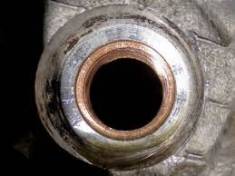
Meanwhile, spray the threads with penetrating oil to get rid of as much gunk as possible. Keep repeating the tightening and loosening procedure.
Step 5. Warm It Up
You can try this step if the spark plug doesn’t come out even after the last step. Turn on the engine to allow the spark plug to warm up. The heat will help to loosen the grime around the spark plug and the oil penetrates deeper into the spark plug’s thread. Allow the engine to completely cool down now otherwise you might burn yourself.
Keep repeating the above steps until the spark plug comes out of the aluminum head.
Step 6. Cleaning
Then, get a dry rag to soak up the oil and spray the threads with brake cleaner to remove any residual oil. You can also choose to blow-dry the area with some compressed air.
You can read our article on Best Replacement Spark Plugs For 5.4 Triton.
Things to Remember When Removing Stuck Spark Plugs
After reading the step-by-step guide, you might have understood how to remove the spark plug from the aluminum plug. But how will you make sure that the work is getting completed correctly and safely?
We have listed a few points that you need to remember while removing stuck spark plugs to solve this dilemma.
- When removing a stuck spark plug from an aluminum head, the first thing you must do is search for a spark plug remover for your specific engine.
- For the work, you must only use the appropriate tool. Thinking that any tool can help you remove the stuck spark plug is wrong.
- Next, you should ensure that the spark plug installation is done correctly. It will avoid excessive heat loss.
- If you do not want to end up in this situation again, check the spark plug condition. And if you find any issue, fix it immediately.
- You must avoid using spark plug removal tools that cannot deliver blunt force.
- Lastly, you should always wear protective gear while removing the stuck spark plug.
Signs of Bad Spark Plug
Below are a few signs that can help you understand whether you should replace the spark plug or not.
Car is Hard to Start
Are you facing difficulty in starting the car? Maybe it’s not the battery but the spark plug causing the issue. If the problem is caused by fuel to the spark plug, the vehicle’s engine would need to work hard to compensate for the clogged spark plugs.
Engine Misfire
Engine misfire can be caused due to a variety of factors, but the worn spark plug can also cause it. You will notice that the engine pace falters and catches back up if this happens. In addition, you could also hear engine pop noise.
Engine Making Noise When Idle
Does the engine of your vehicle make noise when it’s idle? If so, you should check the spark plug. If there is an issue with the spark plug, the engine will make noise without getting stressed.
Car Struggles to Accelerate
Does your car face difficulty while accelerating? It can be a sign that the spark plug has been damaged.
You are Heading to Gas Stating More Often
When the spark plug gets worn out, it works on the engine. As a result, you are required to fill gas in the vehicle more often.
What Causes Spark Plug to Fail
There are a few factors that can cause spark plugs to fail. Scroll down to have a look.
Build of Oil and Carbon
Usually, the spark plug goes bad because of oil, combustion products, and carbon buildup.
While the spark plug comes with an anti-corrosion coating that protects it from long-term damage, the coating eventually wears down. And when this happens, the spark plug becomes an easy attack target for combustion byproducts, oil, and carbon.
Use of Leaded Gasoline
Another thing that becomes a common cause for spark plug failure is the use of leaded gasoline. That’s because it lets the lead enter the engine, causing deposits of components like piston rings and valves. The buildup then enters the spark plug, making it fail.
Poor Quality Fuel
Poor-quality fuel can also make the spark plug go bad quickly. That’s because the material inside low-quality fuel does not last long as it’s contaminated. So, when it enters the engine, it puts stress on the spark plug, making it erode.
It creates electric shorts, which start throwing spark everywhere. It can lead to misfires and throw off the engine’s timing, affecting gas mileage and performance.
Bad Fuel Filters
Not just bad fuel but a bad fuel filter can also make the spark plug go bad quickly. The work of a fuel filter is to protect the engine from and keep it clean from dirt, rust particles, and other contamination.
When the vehicle’s air system gets exposed to this much dirt, it affects the spark plug performance.
Loose Wire Connection
If the wire connections are loose, the spark plug can get damaged. So, it’s advised to check all the wires before you replace any part related to the spark plug. If you want to avoid premature wear, use only good-quality spark plugs.
Overheating
If the spark plug’s tip is overheated, it can cause the spark plug to wear out prematurely. Generally, overheating takes place when the engine timing is off. In this case, pre-ignition happens. Excess heat will build up if this happens, affecting the spark plug performance.
Paying no attention to the Spark Plug
If the spark plug is old, it must be replaced quickly. Ideally, the lifespan of a spark plug depends on the engine make and driving condition. However, experts recommend changing the spark plug every 30,000 miles or 3 years.
It’s important to understand that spark plugs must not be replaced just for the sake of replacing them. You must get it changed if you notice signs of damage. If you are using the best fuel quality, like high-octane gasoline, the spark plug will last 3 more months. Also, good synthetic engine oil can increase the lifespan of the spark plug.
Spark Plug Remover Myths and Facts
Myth 1: Before removing the spark plug, you can unscrew it if you place steel wool on it.
Fact: Honestly, if you place steel wool on the top of a spark plug, it won’t come out. It’s just not possible.
Myth 2: You just need a rubber mallet to remove the spark plug.
Fact: You can surely use a rubber mallet for removing the spark plug, but if you have an option, it’s better to use the entire spark plug extractor kit. That’s because hitting the spark plug with an extractor kit is easier than doing it with mallet rubber.
Myth 3: For dissolving the spark plug in the aluminum head, you can use chemicals.
Fact: If you are using chemicals, it will only help you loosen the spark plug. Remember that chemicals won’t help remove the spark plug stuck in the aluminum head.
Myth 4: The spark plug can be changed when the engine is hot.
Fact: Changing the spark plug when the engine is still hot is highly discouraged. That’s because a hot engine can damage the plugs and the head since there are differing thermal expansion rates. So, the best thing to do is wait till the engine gets cool.
Myth 5: You need to put anti-seize on the thread
Fact: There is no need to put anti-seize to the thread because the spark plugs from the factory have a coating, preventing the galling of thread. That means if you apply an anti-seize coating, it would only result in incorrect torque readings as its use can increase the torque value by 20 times.
Myth 6: Thicker wire means more fire
Fact: It is not true because the real core of the spark plug is small. Also, its resistance is indicated by the OEM. Not to mention, the girth of spark plug wire is shedding and insulation.
So, if the performance wires are thicker, they can provide better electromagnetic shedding for running performance.
FAQs
Should I use anti-seize on spark plugs in the aluminum head?
Generally, it is recommended not to use anti-seize on spark plugs because it is not quite effective in this case. Moreover, it could also cause potential over-torquing. Instead, you could use a high-quality penetrating oil to loosen the rust buildup and gunk around the stuck spark plug.
Can you use WD40 to loosen spark plugs?
WD40 can be used to loosen the rust build-up around the spark plugs. However, it is not much effective and won’t remove much rust. You should rather try PB Blaster, CRC Freeze Off, or Knock-er Loose which is efficient at removing rust from the stuck spark plugs.What happens if you remove one spark plug?
By removing one spark plug, you will create a major fire hazard. That’s because the air-fuel will be ejected from the hole to the underhood area.
Can you drive with a missing spark plug?
Honestly, you can drive with a missing spark plug. But doing so is discouraged because it can lead to noise and loss of power. It can also damage the spark plug hole itself in time. Also, the engine will fail to function.
Final Words
A spark plug getting stuck in the aluminum head is the last thing you’d wish for. It can easily ruin your day and require a lot of time to get it out. The spark plugs can be stubborn and won’t want to come out easily. You need to be patient while working with them and use penetrating oil to loosen the rust.
The above article tells you everything you need to know while removing seized spark plugs from the aluminum head. We hope you know how to remove the stuck spark plug from the aluminum head and would be able to do it yourself. If you don’t feel confident about it, then please consult a professional technician because if anything goes wrong, you’ll have to pay for a costly repair.
